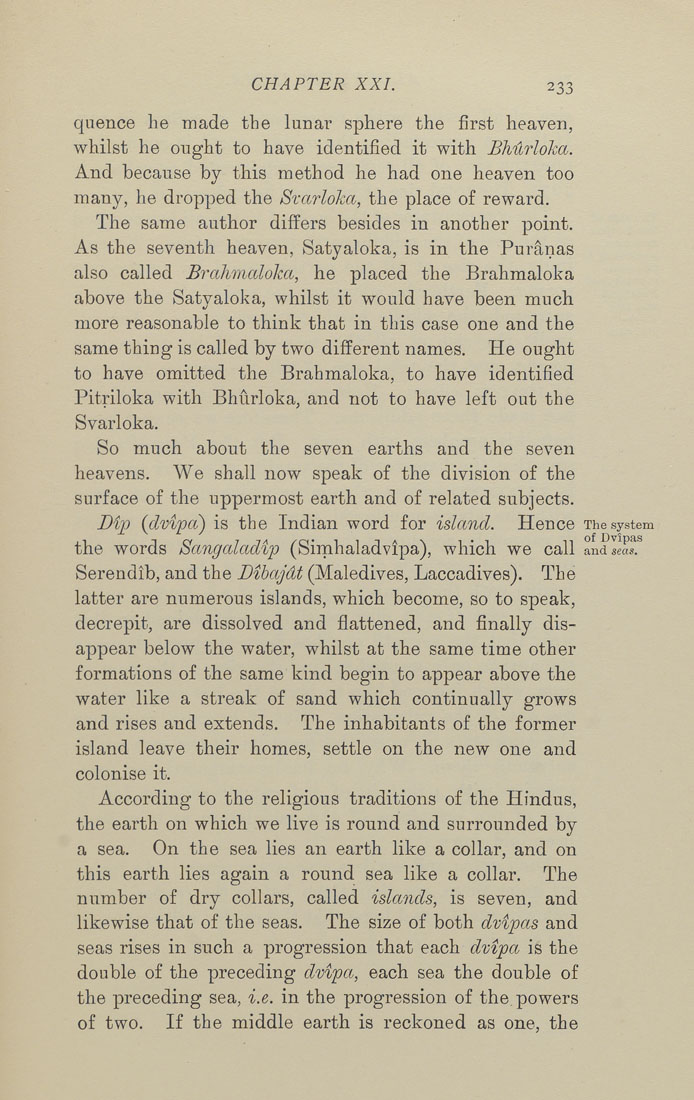Bīrūnī, Muḥammad ibn Aḥmad, Alberuni's India (v. 1)
(London : Kegan Paul, Trench, Trübner & Co., 1910.)
|
||
|
|
|
|
| Page 233 |

CHAPTER XXI. 233 quence he made the lunar sphere the first heaven, whilst he ought to have identified it with Bhilrloka. And because by this method he had one heaven too many, he dropped the Svarloka, the place of reward. The same author differs besides in another point. As the seventh heaven, Satyaloka, is in the Puranas also called Brahmaloka, he placed the Brahmaloka above the Satyaloka, whilst it would have been much more reasonable to think that in this case one and the same thing is called by two different names. He ought to have omitted the Brahmaloka, to have identified Pitriloka with BhUrloka, and not to have left out the Svarloka. So much about the seven earths and the seven heavens. We shall now speak of the division of the surface of the uppermost earth and of related subjects. Dip (dvipa) is the Indian word for island. Hence The system the words Sangaladip (Sirnhaladvipa), which we call and seas. Serendib, and the Dihajdt (Maledives, Laccadives). The latter are numerous islands, which become, so to speak, decrepit, are dissolved and flattened, and finally dis¬ appear below the water, whilst at the same time other formations of the same kind begin to appear above the water like a streak of sand which continually grows and rises and extends. The inhabitants of the former island leave their homes, settle on the new one and colonise it. According to the religious traditions of the Hindus, the earth on which we live is round and surrounded by a sea. On the sea lies an earth like a collar, and on this earth lies again a round sea like a collar. The number of dry collars, called islands, is seven, and likewise that of the seas. The size of both dvipas and seas rises in such a progression that each dvipa is the double of the preceding dvipa, each sea the double of the preceding sea, i.e. in the progression of the powers of two. If the middle earth is reckoned as one, the |
| Page 233 |







